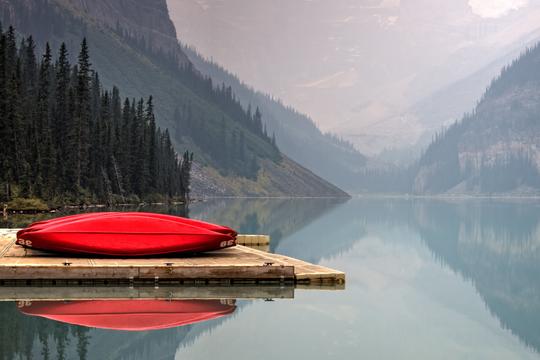
Take a walk on North America’s wild west side
From Canada’s turquoise mountain lakes to America’s deep red river canyons, here's 8 ideas for your next great wilderness adventure
The world’s second-largest country but ranking a mere 37th in population, Canada is a nation defined by its raw, rugged geography. In the western provinces of British Columbia and Alberta, towering old-growth forests shelter dazzling electric blue lakes, and the snow-capped Canadian Rockies are a paradise for outdoor adventurers. While Canada’s scenery will leave a lasting impression, its cities are equally worth a visit, from hip Vancouver to the under-the-radar cool of Calgary.
All countries require a valid passport (with a minimum 6 months validity) in order to enter into Canada. Visa requirements may change, so for the most up to date information we recommend using our Entry Requirements tool. Alternatively, check the United States embassy website in your country of departure.
There aren’t any specific vaccinations needed for travel to Canada. As advice can often change, you can check out Entry Requirements tool for the most up-to-date details on vaccination requirements.
Canada is a vast country, so the best time to travel here really depends on what you’re looking to do here. The summer months of June, July and August bring the best weather — think warm, sunny days and an abundance of festive activities like the Calgary Stampede — with added crowds of course.
Spring (late March to late May) tends to be the best time for wildlife watching as the animals begin to emerge from their hibernation. If you’re looking for the prettiest time of year to travel, then we’d recommend Autumn as the leaves turn to orange and brown. Of course, if skiing is your thing, then the winter months (November to February) is the time to come.
Mobile phone coverage is usually excellent in large cities and towns across the country. However, it may be patchy in remote spots like national parks and in mountainous areas. Make sure that global roaming is on and be aware that you may be charged — contact your phone provider for further information.
It’s customary in Canada to tip service providers such as waiters, bartenders and taxi drivers, at approximately 18-20%, depending on the service. Tipping is an expected — though not compulsory — component of your tour programme and an expression of satisfaction with the persons who have assisted you on your tour.
There are times during the trip where there is opportunity to tip any local guides used. Recommendations for tipping local guides would range from USD $2-8 per activity depending on the quality and length of the service. Ask your CEO for specific recommendations based on the circumstances and culture.
Plus, at the end of each trip if you felt your G Adventures Chief Experience Officer did an outstanding job, tipping is appreciated. The amount is entirely a personal preference; however as a guideline USD $5-10 per person, per day can be used as a guide.
You can find great internet access all over Canada, and if you’re looking for Wi-Fi, there are plentiful hotspots available in towns and cities.
While ATMs are commonly available, there are no guarantees that your credit or debit cards will actually work. Visa and Mastercard genuinely are the most widely-accessible cards, but you should check with your bank before you travel.
Credit cards are accepted almost everywhere in Canada too and can be used to purchase small and large items. When purchasing products or services with a foreign credit card in Canada, you may be charged additional fees by your credit card company for foreign purchases.
As currency exchange rates can fluctuate often we ask that you refer to the following website for daily exchange rates: www.xe.com.
In a word — yes. Canada is one of the most LGBTQ+-friendly countries in the entire world, and you can expect a thriving scene in large towns and cities. Rural areas may be slightly more conservative, so it pays to be slightly more discreet.
As part of their commitment, all CEOs receive LGBTQ+ inclusion training so every traveller feels respected and welcomed on all of our tours. We commit to making our tours a safe and inclusive place for people to express their authentic selves without judgement, free from any discriminatory language or harassment.
While travelling with G Adventures, all travellers must treat each other with dignity and respect to create an environment that is positive, safe, and where everyone feels welcome. You can find out more via our LGBTQ+ travel page.
Yes, you can drink tap water all over Canada as a general rule. We recommend you bring a reusable water bottle for environmental reasons.
Canada was recently voted as the safest country to travel to in the whole world, and crime levels here remain very low. Of course, crime can occur anywhere in the world, so it still pays to be aware, but the main thing to be aware of generally are wild animals in national parks and rural areas and road traffic accidents.
G Adventures takes all reasonable measures to ensure your safety and enjoyment while travelling with us. All of the included activities are properly vetted and regularly checked by us, and we take great care in choosing the right transportation, stays throughout your trip, and guides to lead your tour. However, there are always inherent risks when travelling — you can find out more via our travel safety page.